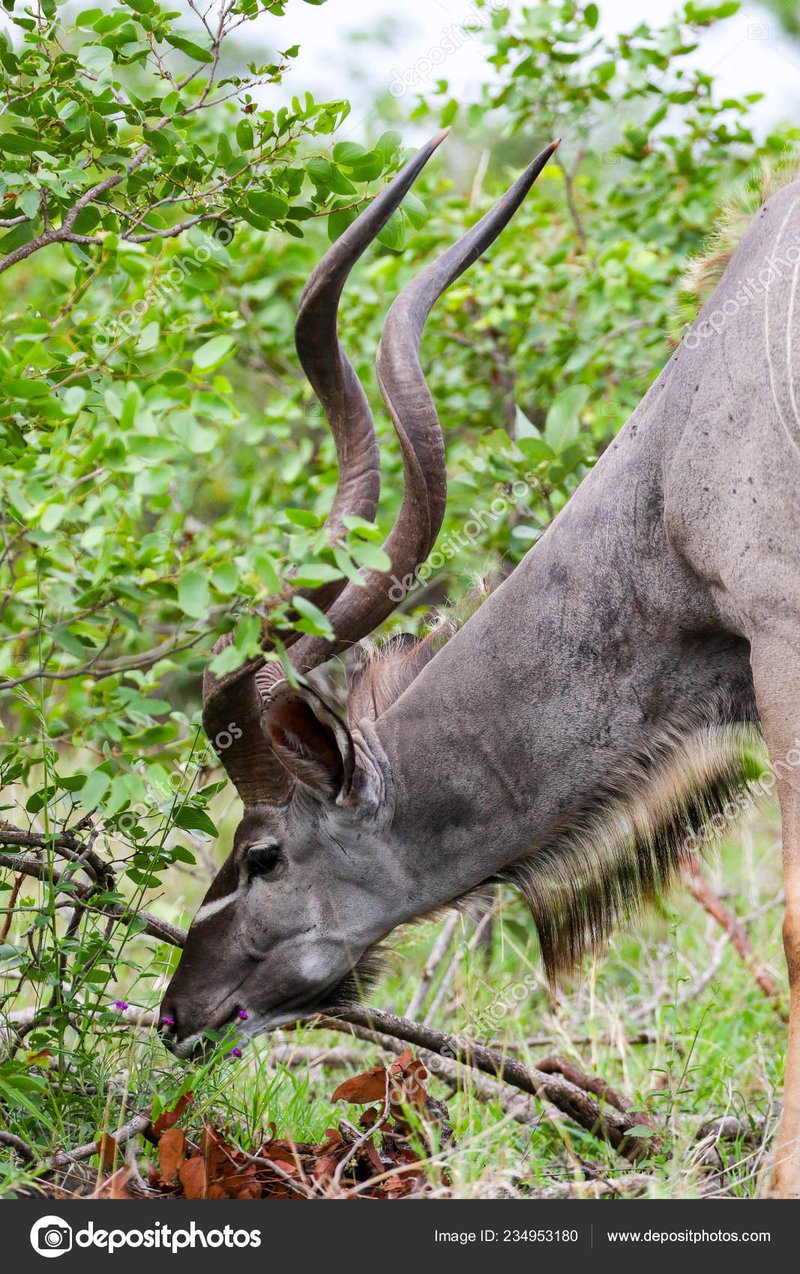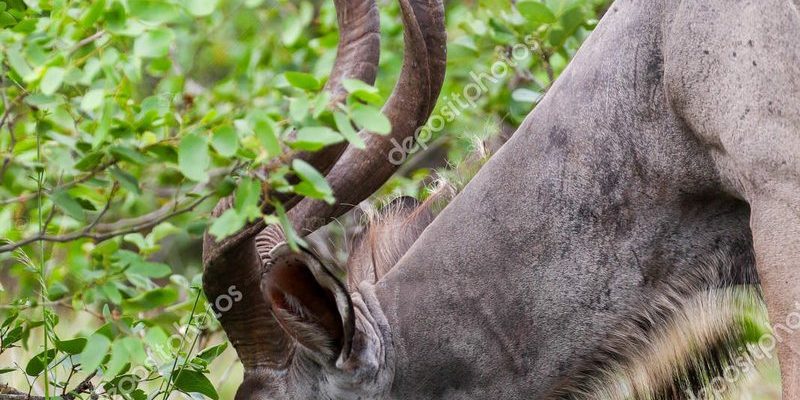
Let me explain. Kudus are herbivores, meaning their diet consists primarily of plant matter. This choice of food affects not only their health but also how they interact with their environment. Additionally, the way they hunt for food is a captivating story on its own. I’ll take you through the details of what makes the kudu’s diet unique and how these strategies help them thrive in the wild.
Understanding the Kudu’s Diet
Kudus primarily feed on a variety of plant materials, which includes leaves, fruits, and even the occasional twig. They are particularly fond of certain trees and shrubs, which offer them both nourishment and cover from predators. You might be wondering how they choose their meals. Well, kudus have a keen sense of taste and smell, enabling them to select the most nutritious options available.
Kudus are browsers, which means they prefer to graze on leaves high up in trees rather than on grasses closer to the ground. This behavior not only helps them avoid competition with other herbivores but also allows them to access food that is often untouched. Some of their favorites include acacia and marula trees. Here’s a fun fact: kudus can consume a significant amount of plant matter in a day, sometimes over 30 pounds!
In terms of seasonal changes, the diet of kudus can vary greatly. During the wet season, fresh leaves and fruits are plentiful, making it easier for them to find food. However, in the dry season, they may have to travel further to find their preferred meals. Their adaptability in diet helps them survive fluctuations in their environment.
Hunting Strategies: How Kudus Find Food
Now that we know what kudus eat, let’s dive into how they find their meals. Kudus are excellent foragers, utilizing their physical abilities to navigate through dense foliage. Their long legs and powerful bodies allow them to leap over obstacles with grace. Imagine a ballet dancer effortlessly leaping across the stage—that’s how kudus move through their habitat.
They often feed in the early morning or late afternoon, which is when they feel safest from predators and can take advantage of cooler temperatures. During these times, they slowly move through the bush, using their sharp eyesight to spot potential threats. This strategy is crucial. By remaining vigilant while they eat, they minimize their risk of becoming a meal themselves.
Additionally, kudus often rely on the wind to help them detect danger. If they sense a predator nearby, they can quickly adapt their feeding strategy, either hiding or moving to a safer area. This instinct to remain aware of their surroundings is essential for their survival in the wild.
Social Behavior and Feeding Habits
Kudus are generally solitary animals, but they can also be seen in small groups, especially mothers with their young. This social structure can influence their feeding habits. When in a group, they can keep a lookout for predators while some members eat, increasing their safety. Think of it as a support system where they all keep an eye out for each other.
Interestingly, female kudus often choose to graze together, while males may be more solitary or form loose bachelor groups. This difference in behavior also affects their access to food. Males usually require more nutrition to maintain their size and strength, so their feeding patterns might be adjusted accordingly.
Kudus also exhibit a behavior called “selective feeding,” where they choose the most nutritious plants and avoid those that offer less nutritional value. This strategy is crucial, particularly when food sources are limited, as it helps them maintain energy levels and overall health.
Threats and Adaptations
The kudu’s diet and hunting strategies are not only fascinating but also a pivotal part of their survival. With various predators, including lions and hyenas, kudus face threats daily. To counter this, they’ve developed several adaptations. Their large ears provide excellent hearing, allowing them to detect subtle sounds of danger. Additionally, their coloration, a mix of browns and grays, helps them blend into their environment, making it harder for predators to spot them.
Another key adaptation is their ability to remain motionless for long periods. When threatened, kudus can freeze and stay hidden within the foliage. This tactic can often be the difference between life and death.
Moreover, kudus often have a preference for areas where they can find dense vegetation, which offers both food and protection. By choosing their habitats wisely, kudus increase their chances of survival while still accessing their required nutrition.
Impact of Human Activity on Kudu Diet and Behavior
With the ever-increasing impact of human activity on wildlife, kudus are not immune to change. Habitat loss due to farming and urban development can lead to limited access to food sources. As people encroach on their territories, kudus may be forced to adapt their feeding strategies or migrate to survive.
Moreover, some regions have experienced an increase in poaching, which threatens their population. When their numbers are reduced, the social structures and hunting strategies can also be affected. This might lead to more solitary behavior and increased competition for remaining food sources.
To help, conservation efforts are vital in protecting both the kudus and their habitats. Initiatives that promote sustainable land use can benefit these animals significantly. By ensuring that they have access to their natural food sources, we can help maintain the delicate balance of their ecosystem.
In conclusion, the diet and hunting strategies of the kudu are a beautiful testament to nature’s elegance and complexity. These graceful animals have adapted over time, developing behaviors and strategies that help them thrive in a challenging environment. From their selective feeding habits to their keen awareness of predators, kudus navigate their world with a blend of grace and instinct.
As we continue to learn more about these stunning antelopes, it’s important to remember our role in their conservation. Protecting their habitats and ensuring they have access to food is essential for their future survival. Next time you think of Africa’s wildlife, let the kudu’s tale remind you of the delicate dance of survival that happens every day in the wild.

